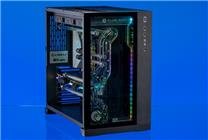Understanding DDR5 Memory: Is It Worth the Investment?
Summary
- Performance vs. Frequency: Higher frequency memory does not always equate to better performance for everyday users.
- Use Case Matters: Gamers and content creators may see benefits, whereas average users might not.
- Cost Consideration: DDR4 remains a cost-effective option for the majority.
The age-old adage, “The higher the frequency, the better the performance,” echoes throughout the tech community. But does this principle hold true in practical use? Are ordinary users genuinely benefiting from high-frequency memory? In this article, we delve into the advancements of DDR5 memory compared to DDR4 and explore when and why investing in high-frequency memory might be worthwhile.
The Role of Memory in System Performance
Memory serves as a vital data transfer station between the CPU and storage devices, directly influencing system response speed. Frequency is a key parameter that defines the theoretical speed of data transfer—akin to a vehicle’s traveling speed on a highway. However, performance isn’t solely dictated by frequency. Timing parameters, which measure memory response delays, also play a crucial role. These timing parameters include various delays from column addressing to row addressing.
High-frequency memory often features increased timing specifications. This can complicate the potential benefits, as improvements in frequency may coincide with reduced efficiency during actual usage—much like a car speeding through a series of red lights.
DDR5 vs. DDR4: Quantifiable Differences
DDR5 represents a significant upgrade over its predecessor, offering over 50% increased bandwidth. For instance, DDR5-4800 achieves 38.4 GB/s compared to the 25.6 GB/s of DDR4-3200. Additionally, DDR5 introduces a power management integrated circuit (PMIC), dynamically adjusting voltage and reducing peak current fluctuations. This translates to lower power consumption, which is especially valuable for mobile devices.
Despite these advancements, the practical implications may vary. While testing shows marginal improvements in boot times and software loading speed—often less than one second—ordinary tasks benefit little from increased memory frequency. In daily scenarios like web browsing or document processing, moving from 3200 MHz to 6400 MHz may yield negligible performance differences.
Gaming Performance: A Mixed Bag
For gamers, the advantages of high-frequency memory hinge on game types and hardware configurations. In graphically intensive AAA titles, boosting memory from 3200 MHz to 6400 MHz often results in only minor frame rate enhancements, typically indistinguishable to the average gamer.
However, in certain CPU-dependent games, particularly those using integrated graphics, upgrading to high-frequency memory can yield significant results—improving frame rates by over 25%. Such games rely heavily on memory bandwidth to process extensive scene data and intricate texture information.
The Pros of High-Frequency Memory for Content Creators
Professional content creators stand to gain the most from high-frequency memory. Tasks like 4K video editing and 3D rendering show substantial benefits from DDR5. Tests indicate that using DDR5 can reduce export times by approximately 20% and enhance 3D rendering speeds by as much as 37% in some cases. This efficiency stems from the memory’s capability to pivot large quantities of data swiftly, addressing potential bottlenecks in data transmission.
Moreover, DDR5 supports higher single-module capacities, making it indispensable for handling memory-intensive workflows, such as 8K video projects or complex 3D models.
Timing and Cost Considerations
However, the advantages associated with DDR5 come at a price. The latency for DDR5 is typically 30-40% higher than that of DDR4, which can limit its performance in delay-sensitive gaming scenarios. Additionally, the cost of DDR5 memory remains higher, requiring users to ensure their platforms—motherboard and CPU—support this new generation.
For those working within limited budgets, DDR4 offers a more economical route. Standard options in the frequency range of 2666 MHz to 3200 MHz are generally enough for everyday computing, while still remaining cost-effective.
Choosing the Right Memory
Upgrading memory should follow the "Wooden Barrel Principle," which suggests improving the most significant weaknesses in your system first. For most users, enhancing memory capacity is more crucial than pursuing higher frequencies. The performance leap from upgrading from 8GB to 16GB typically outweighs the benefits of boosting frequency from 3200 MHz to 6400 MHz.
When considering memory options, weigh your specific needs and budget. Currently, DDR4 is optimal for general use, while DDR5 excels in the 5600 MHz to 6400 MHz range for users seeking high performance, gaming capabilities, or professional projects.
Conclusion
While there’s truth in the notion that higher memory frequency could improve performance, it’s crucial to match this enhancement to your specific use case and hardware. For average users engaged in daily tasks, existing DDR4 setups generally suffice. Gamers should evaluate their gaming habits and hardware configurations before deciding on upgrades, while professionals focused on demanding applications can indeed reap rewards from embracing DDR5. Evaluating the balance between cost, necessity, and performance will enable users to make informed decisions about memory upgrades that align with their individual requirements.






